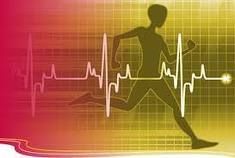The transition from a sedentary lifestyle to an active one is a physiological marvel. Whether you are new to exercise or are a longtime athlete, understanding what happens to your body during those first few minutes of exercise will help you stay safe, comfortable and motivated. You'll also be able to get the most out your warm up and entire workout.
Why Do I Feel So Out of Breath?
If the first 5 minutes of your workout are the hardest, you aren't alone. That feeling of early fatigue during exercise is actually quite normal. In fact, it happens to even highly trained athletes. But rather than feeling demoralized and psyched out by your heavy breathing and burning legs, use this knowledge as a reminder of the importance of the warm-up, and remember what's happening in your body in the first few minutes of exercise.
The physiological changes that allow you to maintain steady-state exercise occur during almost any exercise, but that heavy sensation of fatigue and breathlessness is most commonly noticed during running, cycling, stair climbing, swimming, and other high-intensity, full-body endurance exercise. The sensation is caused by the body's lag time in delivering adequate fuel to the working muscles.
You may feel a burning sensation and discomfort in the muscles, and start breathing heavily as you increase the delivery of oxygen to the muscles. Your heart rate will also increase to pump more blood, along with oxygen and nutrients, throughout the body. Once the transition occurs, you can move along comfortably at a steady pace and your breathing rate and heart rate will settle down as well.
While some people may find this initial burning and fatigue a major deterrent to exercise, keep in mind that if you make it through this challenging phase, your body will adapt to a steady state in which the aerobic energy system is able to keep up with the oxygen demand more readily. Yes, you may need to adjust your pace to an appropriate level based upon your physical conditioning, but whether you are taking a Zumba Class or Spinning or running a 5k, or out for a brisk walk, you will find a steady pace where you will be able to continue moving for quite some time before you run out of energy.
The Benefits of a Gradual Warm Up
If those first 5 or 10 minutes are simply too uncomfortable for you to push through, or if you are new to exercise, you can easily avoid this discomfort by engaging in a longer and more gradual warm up. A warm-up is smart for a variety of reasons — particularly for injury prevention — but easing into any intense cardio exercise is far more comfortable and enjoyable if you don't feel like you are wiped out before you've begun. By starting your workout at a comfortable pace and gradually adding speed or intensity during the first 5 to 10 minutes, you will avoid the early discomfort of oxygen debt and the rest of your workout may feel much more effective.
Although these temporary physiological changes occur in anyone switching from sedentariness to activity, if you exercise regularly, this transition will happen faster and more seamlessly. But that's not the only good thing that will happen: Long-term physical changes, or adaptations, also occur in the bodies of regular exercisers. The heart muscle becomes stronger and able to pump more blood with each contraction, which results in a lower heart rate. Lung capacity and oxygen transfer also increase. Blood vessels become wider and more elastic, blood pressure decreases and new capillaries form. All of these changes lead to many long-term health benefits from regular exercise.
The Importance of Pushing Through
Next time you start exercising and feel the discomfort of going out too hard or too fast, visualize what's occurring in your body, breathe, ease up a bit and keep on going. If you want to take a gentler approach when you head out for a workout, use the first 5 minutes as an easy warm-up, the next 5 minutes to ramp up the pace and then settle into your workout as usual.
With these tips and a newfound understanding of the physiology of the warm up, you may find that you start looking forward to your workout rather than dreading it.

